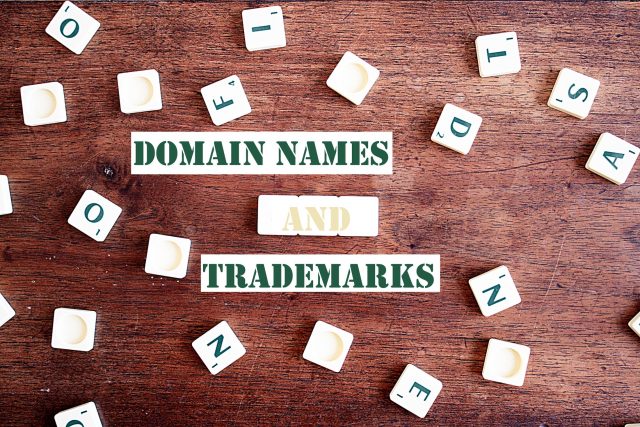
“We have registered a trademark, what protection do we have against someone registering an identical domain name?”
The question above is a querie we often answer at Dotkeeper and AWA. Understandably so, since it isn’t always easy to distinguish between what these different rights encompass and which protections they give to your company. In the age of digitalisation, the boundaries between trademarks and domains have become even less clear. It is not for nothing that domains and trademarks have been talked of as the digital and legal sides of the same intellectual property coin. Domains are no longer just a URL or website address; they are the hub of organisation’s digital identity. In many ways they are the digital equivalent of a trademark, and they often command a very high financial price.
Despite their similarities, there are legal differences between trademarks and domains that are important to understand. A trademark registration doesn’t give the automatic right to a domain name. Neither does a domain registration give you trademark rights. To be truly protected, you need both.
Here are some of the most important differences to be aware of:
Exclusivity
Unlike trademark registrations, a domain registration does not grant you exclusive use of the wording in the domain name. Domains are of course unique, so there is only one version of each, for example dotkeeper.com or dotkeeper.se. With a domain registration, you are obtaining the rights to that unique entity only.
This is an important distinction from trademark registration.
Registered trademarks cover exclusive rights in those markets and for the services covered by the registration. This means that seemingly identical trademarks can co-exist, within different markets and product/service areas. For example, the trademark Ajax relates independently to both a football team and a range of cleaning products.
Should a competitor launch a product or service with the same name and in the same market that you are active in, you cannot claim the right to the exclusive use of that name because of a domain registration. In this situation a registered trademark is needed.
Registration process
The procedures for registering trademarks and domains are also distinct.
When someone applies for a trademark, one of the first stages is for authorities to check that the registration would not infringe on the rights of others (for example, that you’re not applying for a trademark that is already registered by someone else).
Some trademark authorities, such as EUIPO (European Union Intellectual Property Office), do not review previously registered trademarks or companies, but it is up to each proprietor to observe the trademark register and object if it has a identical or similar trademark. Furthermore, the authorities look at whether the brand has distinctive character, ie. for example, if the mark is descriptive. For example, it is difficult to register trademark protection for the word posterstore if you intend to sell posters. To be successful with a trademark application, your trademark must be unique, distinctive, and not easily confused with existing trademarks.
With domain registration, however, the guiding principle is generally “first come, first served”, and formal scrutiny takes place only in rare cases. Just as you need to think about the market and the distinctiveness of your trademarks, it’s important to give careful consideration to which domains you register and when. It is often a smart investment to protect your brand and product names early, by registering a domain under selected countries’ domain suffixes. This creates a local presence and is a more cost effective approach than taking the chance that the domains aren’t registered by someone else when you finally need them.
In terms of keeping hold of your registrations, domains normally need to be renewed annually while trademarks are renewed every ten years.
Use Requirements
To maintain a registered trademark there is, in many jurisdictions, a use requirement. This means that you may need to demonstrate that you use the trademark in a sales or marketing context. There is no such requirement for retaining domain registrations.
If someone else registers your trademark as a domain name, it doesn’t necessarily mean that they have infringed upon your rights. To determine whether a trademark infringement has taken place, the first thing you need to establish is whether the person or organisation using the domain is a commercial business, and if so, whether the business is in competition with yours, i.e. is it identical or similar to the product or services that your trademark registration pertains to. If the answer to this question is yes, it may be that the domain breaches your trademark rights. Even so, you may need to look closely at the regulations for the specific domain suffix (the top-level domain or TLD) to assess your chances of winning a legal dispute. The approaches to settling domain disputes differs between TLDs, which dictates how you should proceed. For example, with the Chinese TLD .cn, the trademark holder needs to act within two years of the domain being registered, whereas there is no such requirement for the “alternative dispute resolution” used in Sweden (here you can read more about this process known as alternativt tvistlösningsförfarande or ATF, that’s the primary method of resolving domain disputes under the .se TLD). If an infringement can’t be demonstrated, the way forward could be to instead try to buy the domain from the current holder.
If you, as domain holder, are instead faced with the opposite situation, that’s to say, if someone registers as a trademark a word or phrase you had been using in your domains, then you in most cases have no recourse to appeal against the trademark registration.
So, the answer to the questions at the beginning of the article is that if you want to be sure of complete protection you need to protect your company’s trademarks legally as well as digitally – through the registration of both trademarks and domains.
Read next article
Dotkeeper meets - Niels Bosma
